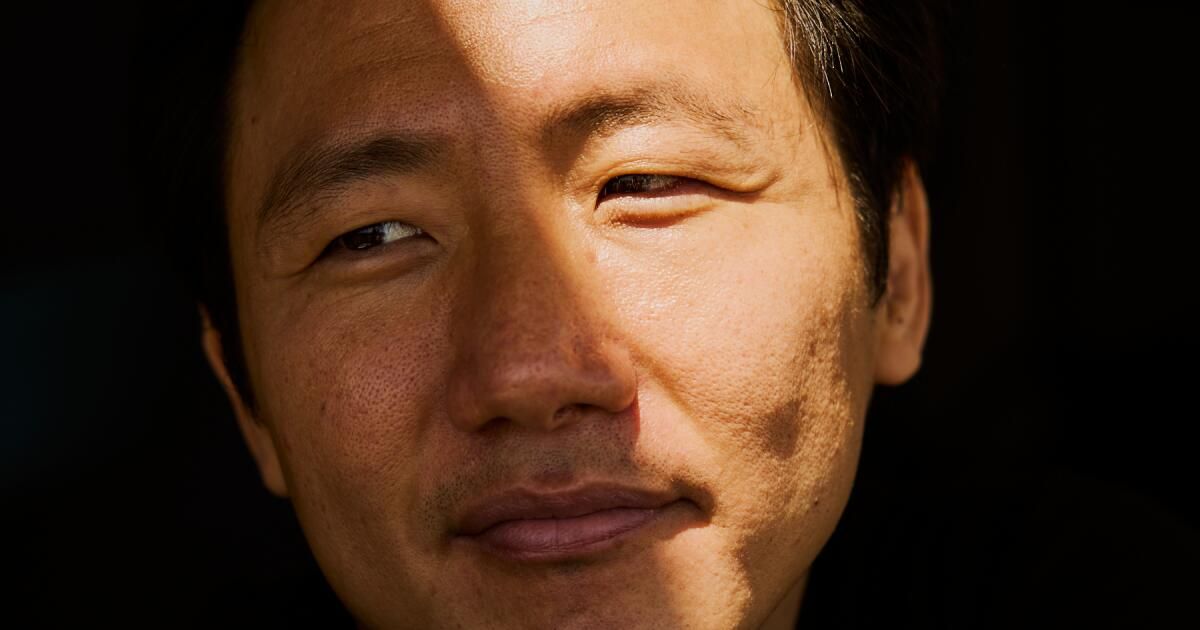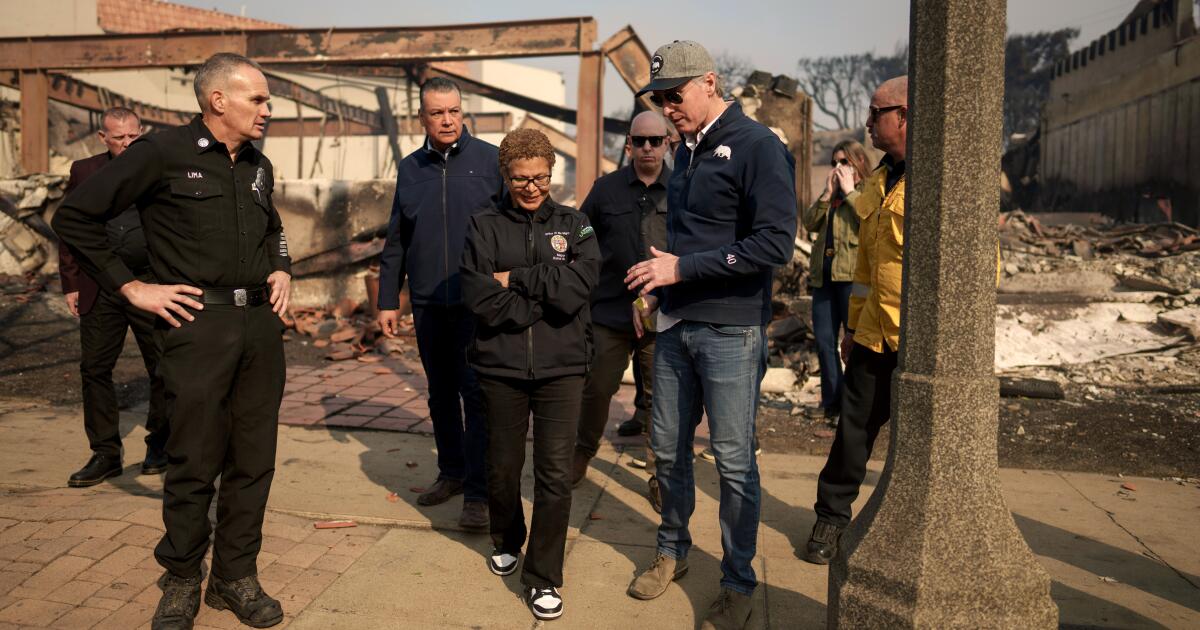“Wanna kiss me? Not like dogs this time, just for real…” That’s Maya Erskine as Jane, who’s ready to renege on the “no romance” agreement she previously made with her fake husband, John (Donald Glover), in “Mr. & Mrs. Smith.” But that was before semi-amateur spies accidentally killed John Turturro’s billionaire character after he subjected them to his dog-fornication fetish. Now, Jane and John forget their platonic vow and go for it, silhouetted against a candy-colored TV cartoon playing crazily in the background.
It’s a clever production from Hiro Murai, who was nominated for an Emmy for directing the pilot for Prime Video’s “Mr & Mrs. Smith.” (Murai also received nominations as an executive producer for “Smith” and “The Bear.”)
From his home in Silver Lake, the USC-educated filmmaker — whose previous collaborations with Glover include “Atlanta” and the Childish Gambino music video “This Is America” — talks about mastering the TV space of sad comedy and funny drama to create a millennial-friendly take on what it means to be a spy in 2024. (He also explains what happens when a spy cat goes rogue.)
“Mr. & Mrs. Smith,” officially a drama, is very comedy-heavy. Do you like to mix and match in terms of tone?
What I think is most interesting in a television show is the interplay between genres, so I'm very conscious of subverting expectations in everything we do. For “Mr. & Mrs. Smith,” the expectation that was created was probably that of a high-octane popcorn movie with Brad Pitt and Angelina Jolie. We were trying to figure out, “How do we take what's inherently unrecognizable about the spy genre and make it into something that can hold up?” Me, Fran [co-creator Francesca Sloane]Donald, Maya… we're all roughly the same age, so we have a similar view of millennial adulthood and what it's like to be in a relationship at our age. In that way, “Mr. & Mrs. Smith” became a study of modern intimacy.
Seeing the classic spy genre as United Nationsidentifiable because…
Because I think the spy genre is a kind of wish fulfillment about very capable people who are equipped with gadgets and behave effortlessly. My experience of adulthood is No That is a matter that requires a lot of effort. [Laughing.] The whole point of our show was, “Okay, they’re cosplaying as capable adults, but they’re actually insecure and pretending to be something they’re not.”
“The whole point of our show was, ‘Okay, they’re cosplaying capable adults, but they’re actually insecure and pretending to be something they’re not,’” says Hiro Murai.
(David Lee/Prime Video)
How did you set up the visual language for “Mr. and Mrs. Smith”?
It's a story about two lonely strangers forced to marry and live in a big brownstone mansion, so the image that immediately came to mind was two cats trying to sniff each other out in the same house. Naturally, I was drawn to [framing] John and Jane are small figures within this opulent, cold space where the only place they can find human connection is with each other. Especially in the pilot, it's a subtle game of push and pull where our characters try to get closer without revealing too much of themselves.
“Mr. and Mrs. Smith” includes a mission for each episode, but there is There are no real villains, no visible boss, no higher cause. Why was that kind of plot omitted?
For me, a big part of the fun was showing how little John and Jane know about their jobs. Who gives them orders? Why? Fran and I talked early on about a Japanese show we like called “Terrace House,” about people who move into an empty house. We realized that the whole concept of “Mr. & Mrs. Smith” almost feels like a reality show. John and Jane have been randomly selected; they have no idea why they’re doing what they’re being asked to do, they’re probably being watched; there’s something scary and absurd about their living situation, so it felt right to draw on paranoia and limit our characters’ understanding of what’s happening to them.
And then there's the cat, “Max”, who appears in the first episode and almost Go all the way. Did you work with a well-trained cat actor?
[laughing]It's never easy because the animals don't know they're on a TV show. One time, the cat escaped and ran under our TV, so we were basically locked in for an hour while the animal caretaker crawled around trying to find him. [Guest stars] Paul Dano and John Turturro were there that day, so we all sat in the living room listening to scratching. [sounds] below.
How did you feel when you finished production on Season 1?
It was gratifying because, at the beginning, we didn't really know what the outcome would be. We knew the people involved were interesting and we knew that the spy genre wants to be nimble, where the right things are said at the right time. Part of the brief for us was to find two “normal” bumbling people in this world and show a bumbling reality in the way John and Jane interact, which seems more meandering and less presentational. To see this elaborate experiment unfold with collaborators that you trust… I feel very lucky.












